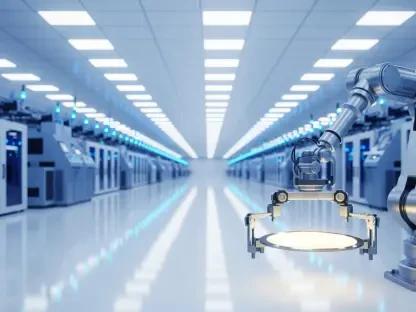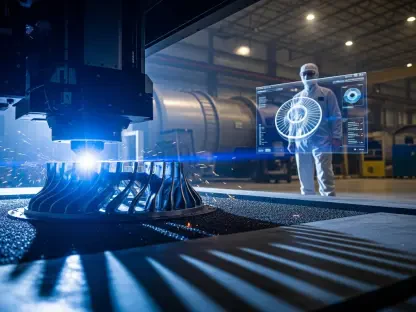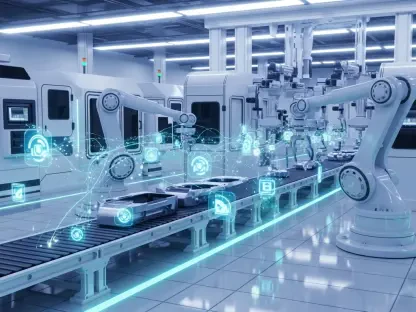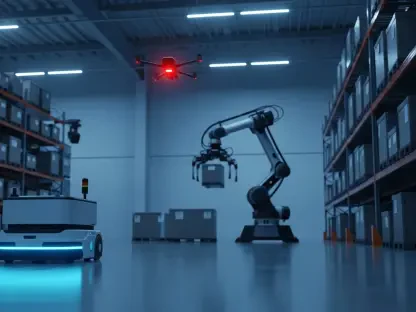China stands at a critical juncture where its once-abundant workforce is shrinking at an alarming rate, posing a significant threat to its status as the world’s manufacturing hub. With a population decline of roughly 2 million in recent counts and projections estimating a loss of tens of millions of working-age individuals over the coming decade, the nation faces an unprecedented demographic crisis. Yet, amidst this challenge, a technological revolution is unfolding—China’s rapid embrace of robotics is reshaping industries and offering a lifeline to sustain economic growth. Automation has become a cornerstone strategy, not just to fill labor gaps but to redefine productivity in a country that installed nearly 300,000 industrial robots in a single year, representing over half of global installations. This surge in robotic systems, surpassing other industrial giants like Japan and the United States, signals a bold pivot toward a future where machines play an integral role in countering the effects of an aging and diminishing population.
Robotics as a Demographic Solution
Automation Filling Labor Gaps
The demographic crisis in China has created acute labor shortages, particularly in labor-intensive industries such as electronics and automotive manufacturing. Factories that once relied on millions of migrant workers are now turning to advanced robotic systems to maintain output levels. These machines, capable of executing complex tasks like welding and assembly with remarkable precision, are not merely temporary solutions but part of a broader transformation. In regions like Guangdong and Zhejiang, manufacturing hubs are witnessing a dramatic shift as robots take on roles previously held by human workers. This transition is crucial, as the shrinking workforce threatens to disrupt the nation’s export-driven economy. By integrating automation, companies are ensuring that production lines keep running even as the pool of available labor dwindles, preserving China’s competitive edge in global markets. The scale of this adoption is staggering, with operational robot stock exceeding 1 million units, a figure that underscores the urgency and ambition behind this technological pivot.
Economic Resilience Through Technology
Beyond simply replacing workers, robotics is fostering economic resilience in China by enhancing productivity and reducing dependency on human labor. The government’s strategic vision, evident in initiatives like “Made in China 2025,” has spurred massive investments in research and development, alongside subsidies that encourage factories to upgrade with cutting-edge technology. This push is evident in industries like electric vehicle production, where companies are deploying humanoid robots for training and operations, aiming for “lights-out” facilities that require minimal human oversight. Such advancements allow for consistent output regardless of workforce fluctuations, a critical factor as demographic projections remain grim. Moreover, automation helps lower production costs, making Chinese goods more competitive internationally. This dual benefit of sustained output and cost efficiency positions robotics as a cornerstone of economic stability, ensuring that the nation can weather the challenges of a declining population without sacrificing its manufacturing dominance.
Global Impact and Future Challenges
China’s Leadership in Robotics Innovation
China’s dominance in the robotics sector is reshaping the global manufacturing landscape, setting a benchmark for other nations grappling with similar demographic issues. With a 5% increase in robot installations at a time when competitors like Japan and the United States face declines, the country’s leadership is undeniable. This growth is fueled by aggressive state policies and private sector innovation, integrating AI-driven robots that adapt to intricate tasks with unprecedented flexibility. Such technological strides not only bolster domestic industries but also influence multinational corporations, prompting them to reconsider supply chain strategies for cost savings and faster innovation cycles. The sheer density of robots in China—greater than the rest of the world combined—highlights a model of automation that could inspire global trends. As other countries observe this trajectory, the adoption of similar technologies may accelerate, potentially redefining industry standards worldwide in the coming years.
Balancing Automation with Social Implications
While the robotics boom offers promising solutions, it also introduces significant challenges, particularly around job displacement in low-skill sectors. Millions of workers risk losing their livelihoods as machines take over repetitive tasks, raising concerns about widespread unemployment and social unrest. Although retraining programs are being implemented to equip workers with skills for tech-driven roles, the scale of the affected population presents a daunting hurdle. Additionally, an over-reliance on automation brings vulnerabilities, such as potential disruptions from semiconductor shortages or other supply chain issues. These risks underscore the need for a balanced approach, where technological advancements coexist with human labor rather than fully replacing it. Policymakers must navigate these complexities to ensure that the benefits of robotics do not come at the expense of societal stability, crafting strategies that address both economic goals and the human cost of this rapid transition.
Looking Ahead to Sustainable Integration
Reflecting on China’s journey, the robotics surge has addressed immediate labor shortages while setting a precedent for global manufacturing. It has demonstrated how technology can counteract demographic declines, with factories maintaining output through automation even as the workforce shrank. Yet, the challenges of job displacement and technological dependency loom large, demanding thoughtful responses. Moving forward, a sustainable path lies in integrating robotics with human-centric policies, ensuring that displaced workers find new roles through robust retraining initiatives. Strengthening supply chains to mitigate risks like component shortages emerges as another priority. China’s experience serves as both an inspiration and a cautionary tale, urging other nations to adopt automation strategically while safeguarding social fabric. The next steps involve fostering international collaboration to share best practices, alongside continued investment in adaptive technologies, to build a future where innovation and humanity progress hand in hand.









